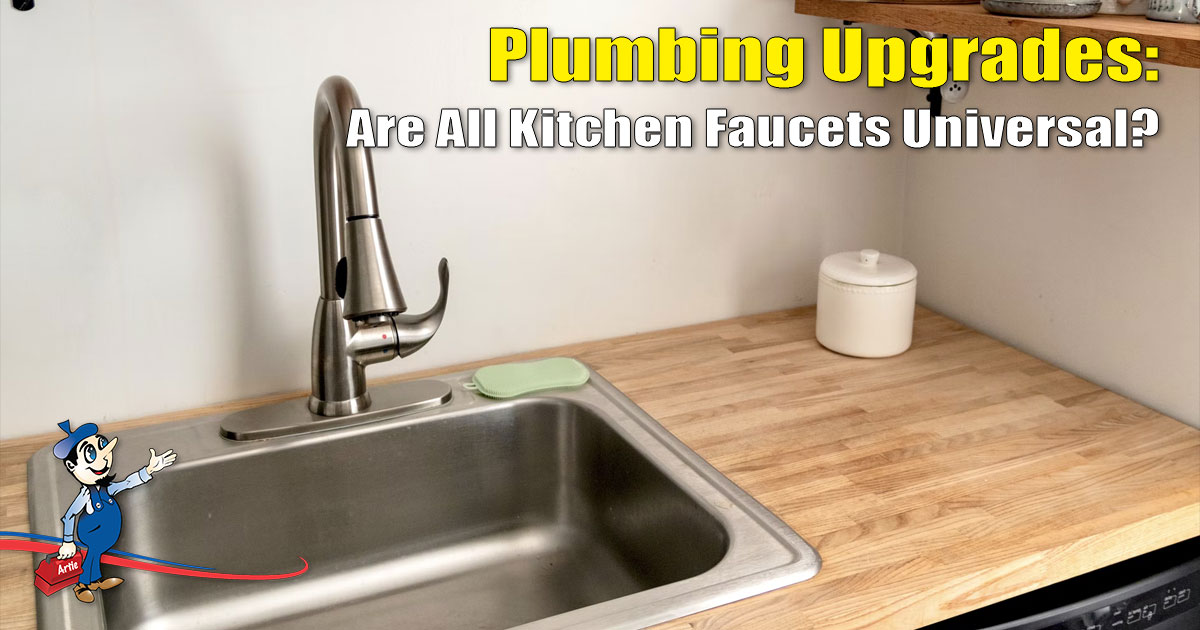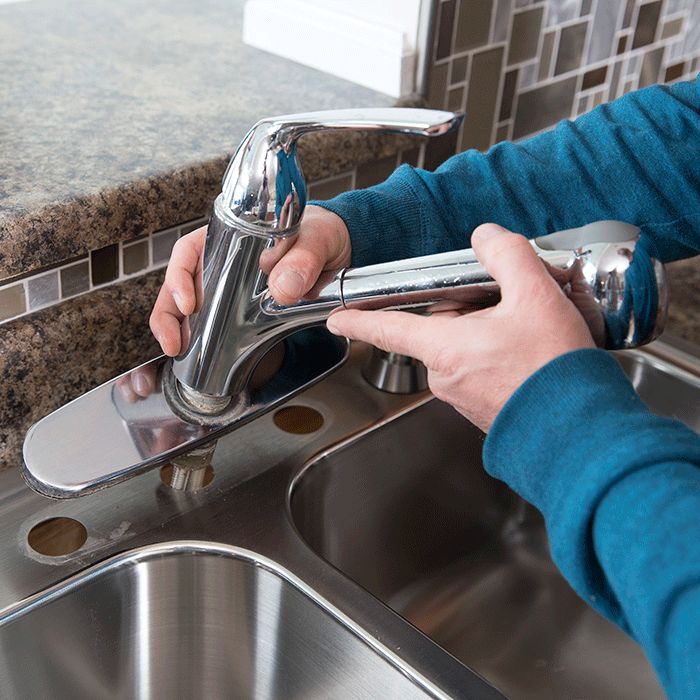As an Amazon Associate KitchenwareSets.com earns from qualifying purchases.
Are Kitchen Faucets Universal? Your Guide to a Perfect Fit
When you’re upgrading your kitchen, finding the perfect faucet can feel like the final, transformative touch. But as you browse the endless styles, a critical question emerges: will the one you love actually fit your sink? The dream is a simple swap, but the reality can be frustrating if you don’t know the key compatibility factors. This guide will demystify the process, ensuring you can choose a new kitchen faucet with total confidence.
Key Facts
* No Universal Standard: Well-established data from multiple plumbing and retail sources confirms that kitchen faucets are not universal due to vast differences in manufacturer design, mounting configurations, and plumbing connections.
* Hole Configuration is King: The primary limiting factor for faucet compatibility is the number of pre-drilled holes in your sink—typically one, three, or four. A new faucet must match this setup or utilize a deck plate to cover extras.
* Common Hole Diameter: While not universal, the most frequently used mounting hole size is 1 3/8 inches in diameter, though variations do exist.
* Supply Line Mismatch is Common: Industry analysis often indicates that newer faucets are equipped with 3/8-inch supply lines, while many older home shut-off valves are 1/2-inch, frequently requiring an adapter for installation.
* Component Specificity: Key internal parts, like durable ceramic disc valves and pull-down sprayer heads, are not interchangeable between brands or even models, making repairs and replacements brand-specific.
Are Kitchen Faucets Universal? The Definitive Answer
No, kitchen faucets are not universal. While some components are similar, compatibility depends on crucial factors like the number of mounting holes in your sink, the type of water supply lines, and the faucet’s overall size and design.
The appealing idea of a one-size-fits-all faucet is unfortunately a myth. Every kitchen sink and plumbing setup has its own unique characteristics. Attempting to install a non-compatible faucet can lead to leaks, an improper fit, or a frustrating return to the hardware store.
Here’s the deal. The reason there’s no universal kitchen faucet comes down to a few core differences:
* Mounting Holes: Sinks come pre-drilled with one, three, or four holes, and your faucet must match.
* Plumbing Connections: The size of your water supply lines under the sink must connect properly to the lines on your new faucet.
* Faucet Style & Size: Wall-mounted faucets have entirely different plumbing needs than standard deck-mounted ones, and even the spout’s height and reach matter.
So if they aren’t universal, how can you guarantee the new faucet you buy will actually fit? Let’s break it down.
Why Faucets Aren’t Universal: Understanding Mounting Holes and Spacing
The number of pre-drilled holes in your sink or countertop is the primary factor determining faucet compatibility. You must match your new faucet to your existing one, three, or four-hole setup, or use a deck plate to cover unused holes. Before you buy anything, look under your sink or at the base of your current faucet to count the holes.
Quick Fact: That metal plate at the base of some single-handle faucets isn’t just for looks—it’s called a deck plate, or escutcheon, and it’s the key to making a modern faucet fit an older sink.
Here’s a clear breakdown of the most common configurations you’ll encounter.
| Configuration | Description | Best For… |
|---|---|---|
| One-Hole | A single hole for the faucet body, which often includes a single handle to control temperature and flow. | Modern sinks, minimalist designs, and installing in three-hole sinks with a deck plate. |
| Three-Hole | Two holes for separate hot and cold handles and one for the central spout. A common standard is an 8-inch spread between the outer holes. | Traditional sink setups, two-handle faucets for precise temperature control. |
| Four-Hole | The same as a three-hole setup, but with an additional hole for an accessory. | Sinks that require a separate side sprayer, soap dispenser, or instant hot water tap. |

One-Hole Faucet Configuration
One-hole faucets offer simple control for temperature and pressure and can be installed in multi-hole sinks using a deck plate to cover extra holes. This is the most popular style for modern kitchens due to its clean look and ease of use.
These faucets are incredibly versatile. Their key features include:
- Sleek Design: A single point of contact with the countertop or sink creates a minimalist, uncluttered aesthetic.
- Simple Operation: One handle typically controls both water flow and temperature mixing, making it easy to operate with one hand.
- Adaptable Installation: A practical approach frequently seen to yield results involves using a one-hole faucet in a three-hole sink. The faucet is installed through the center hole, and a matching deck plate covers the unused holes on either side.
Three-Hole & Four-Hole Faucet Configurations
Three-hole faucets have separate hot/cold handles and a spout, while four-hole setups add an extra hole for an accessory like a side sprayer or soap dispenser. These configurations are very common in older homes or in kitchens with a more traditional design.
With these setups, you have separate hot and cold handles, which some users prefer for more precise temperature adjustment. The fourth hole provides a dedicated spot for an accessory hole, which can house:
- A side sprayer for rinsing vegetables or cleaning the sink.
- A built-in soap or lotion dispenser.
- An instant hot or filtered water tap.
Pro Tip: If you have four holes but want a modern faucet with a built-in pull-down sprayer, you can use the extra hole for a matching soap dispenser or a simple, clean hole cover to cap it off.
Decoding Faucet Styles, Components, and Connections
Beyond mounting holes, faucet compatibility is determined by its mounting style (deck vs. wall), internal components like valves, and the size of your water supply line connections (typically 3/8″ or 1/2″). These factors are just as important as the hole count for ensuring a successful, leak-free installation.
Ever wondered what’s inside your faucet? It’s more than just a pipe—the internal valve is the unsung hero, but its model-specific design is a key reason faucets aren’t one-size-fits-all.
Deck-Mount vs. Wall-Mount Faucets
Deck-mount is the most common style, attaching to the sink itself. Wall-mount faucets attach to the wall, but switching between types is a major plumbing job.
- Deck-Mount: This is the standard you see in most kitchens. The faucet is installed directly onto the “deck” of the sink or the countertop behind it. The vast majority of faucets you’ll find online and in stores are deck-mounted.
- Wall-Mount: This style offers a unique, commercial-kitchen look and frees up counter space. However, the water supply lines must be run inside the wall, making installation much more complex.
Critical Warning: Evidence suggests that wall-mount faucets are not recommended for installation on exterior walls in cold climates. This is due to the significant risk of the water pipes inside the wall freezing and bursting during winter. Furthermore, switching from a deck-mount to a wall-mount faucet (or vice-versa) is not a simple DIY task and almost always requires professional plumbing work to reroute the water lines.
Water Supply Lines: The 3/8″ vs. 1/2″ Connection
Check your water supply shut-off valves. Most new faucets use 3/8-inch lines, so if you have older 1/2-inch valves, you will need an adapter. This is one of the most common hangups during a DIY faucet replacement.
Before you start, look under your sink at the two water shut-off valves coming out of the wall (one for hot, one for cold). Follow this checklist:
- Identify your shut-off valve size. Look at the valve’s outlet where the flexible supply line connects. Older homes often have 1/2-inch outlets.
- Check the supply lines included with the new faucet. Most modern kitchen faucets come with integrated flexible supply lines that have a 3/8-inch compression fitting.
- Purchase an adapter if they don’t match. If you have 1/2-inch valves and a new faucet with 3/8-inch lines, you can easily buy a 1/2-inch to 3/8-inch adapter at any hardware store. This simple part connects your old valve to your new faucet line.
How to Measure for Your New Kitchen Faucet
To ensure a new faucet fits, measure the distance between mounting holes (the “spread”), the spout height (to clear overhead cabinets), and the spout reach (to ensure water flows into the sink basin). Taking these measurements prevents the common mistake of buying a faucet that is physically too large or small for your space.
Don’t just eyeball it! Taking five minutes to measure now can save you hours of frustration and a return trip to the store. Grab a tape measure and check these key dimensions.
- Measure Hole Spacing (Spread): For a three-hole sink, measure from the center of the far-left hole to the center of the far-right hole. As numerous studies have shown, the most common spread is 8 inches, but it’s essential to confirm yours. For a single-hole faucet, you just need to measure the diameter of the hole, which is typically 1 3/8 inches.
- Measure Spout Reach: Measure from the center of the faucet’s mounting base to the center of the spout’s water stream. Your goal is to have the water flow directly into the main basin of the sink, not onto the edge or backsplash. Compare this to your existing faucet or measure from your sink’s faucet hole to the center of your sink drain.
-
Measure Spout Height and Clearance: Measure from the countertop to the highest point of the faucet’s arc. Ensure you have enough clearance below any overhead cabinets or shelves. You don’t want your new high-arc faucet to block a cabinet door from opening.

To make your installation a breeze, consider picking up an all-in-one kit that includes the essential tools you might be missing.
FAQs About Kitchen Faucet Compatibility
Here are answers to some of the most common questions people have when trying to figure out if kitchen faucets are universal.
How do I know if a faucet will fit my kitchen sink?
Check three things: 1) Match the number of holes in the faucet to your sink (or use a deck plate), 2) Ensure the faucet’s water supply lines match your shut-off valves, and 3) Measure to confirm the spout height and reach fit your space. This three-step check covers the most critical aspects of faucet compatibility. If all three of these check out, you can be confident that the new faucet will fit your kitchen sink.
Can I replace a 3-hole faucet with a single-hole faucet?
Yes, you can replace a 3-hole faucet with a single-hole model by using a deck plate (also called an escutcheon) to cover the two unused outer holes. Many modern single-hole faucets come with an optional deck plate included in the box for this exact purpose. This is a very common and easy upgrade that gives your sink a cleaner, more modern look.
Are replacement kitchen faucet spray heads universal?
No, replacement faucet heads (both pull-down and side sprayers) are not universal. The connections, threading, and design are often specific to the manufacturer and model, so it is best to find a replacement from the original brand. While some may appear similar, proprietary connection mechanisms prevent them from being truly interchangeable. Always check with the faucet manufacturer for the correct replacement part number to ensure a perfect fit.
What is the standard size of a kitchen faucet hole?
The most common mounting hole size is 1 3/8 inches in diameter, but variations exist, so it is always best to measure your specific sink before buying. While 1 3/8 inches is a widely adopted standard for many manufacturers, it is not a guarantee. Some faucets may require holes as small as 1 inch or as large as 1 1/2 inches, so confirming your sink’s actual hole diameter is a crucial step.
Final Summary: Choosing Your Perfect Faucet with Confidence
While it’s clear that the answer to “are kitchen faucets universal” is a firm no, you’re now equipped with the knowledge to navigate the differences with ease. The key to a successful upgrade isn’t finding a mythical universal faucet, but understanding the specific requirements of your own sink.
Armed with this knowledge, you’re ready to move beyond the ‘universal’ myth and find a faucet that’s a perfect fit for your kitchen’s style and function. Before you make your final choice, run through this quick checklist one last time:
- Count Your Holes: Confirm if you have a one, three, or four-hole sink configuration and choose a compatible faucet or one with a deck plate.
- Check Your Connections: Look at your water supply valves to see if you have 1/2″ or 3/8″ outlets and get an adapter if needed.
- Measure Your Space: Verify the faucet’s spout height and reach will work with your sink basin and clear any overhead cabinets.
Last update on 2025-12-31 at 03:18 / Affiliate links / Images from Amazon Product Advertising API
